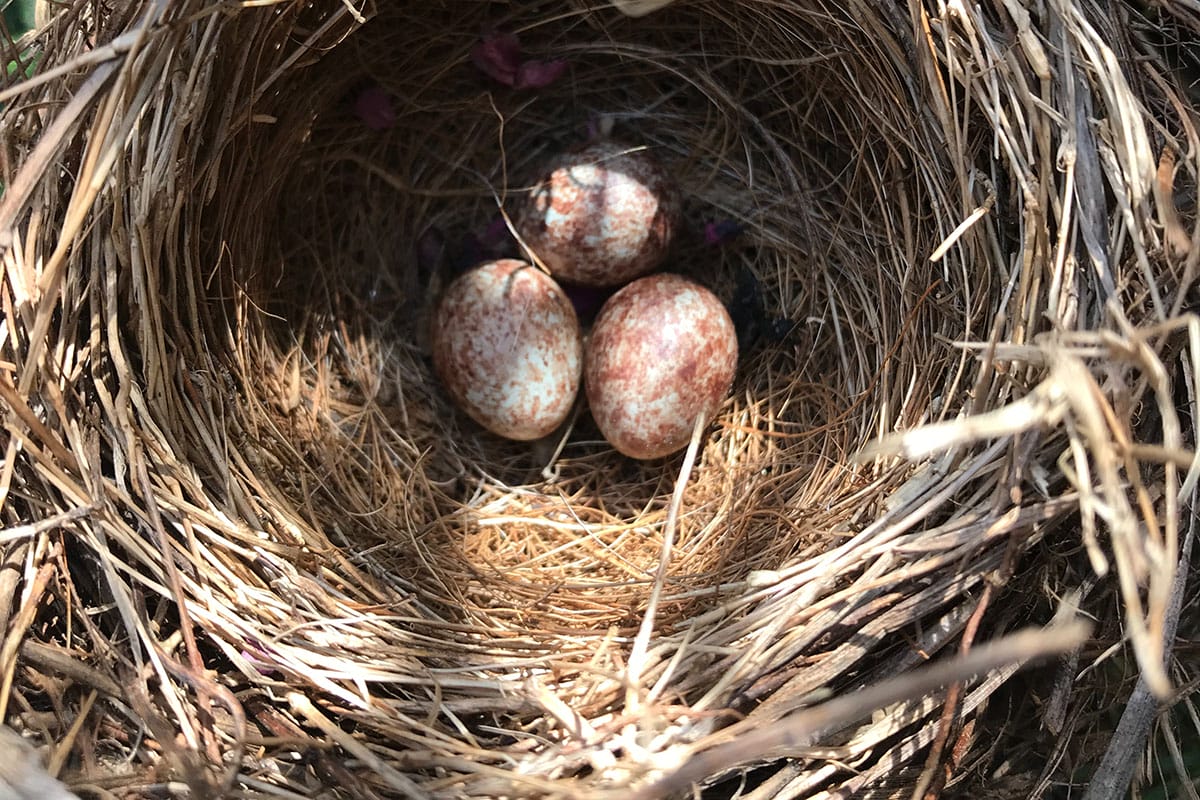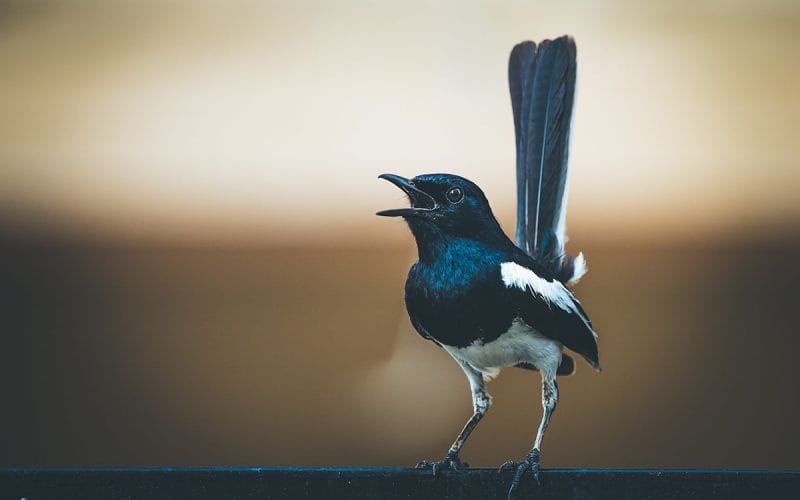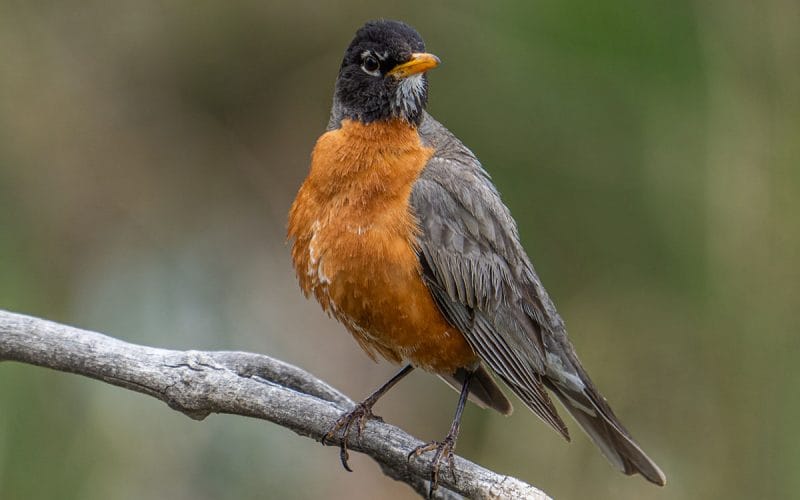It’s a pretty incredible feeling to discover a bird’s nest with eggs for the first time. Unfortunately, since birds are not very thoughtful, these nests can be in places that can cause humans a lot of inconveniences. And in those situations, the obvious question is—how to move a bird’s nest with eggs.
Well, let’s find out.
Are You Allowed To? The Legal Considerations
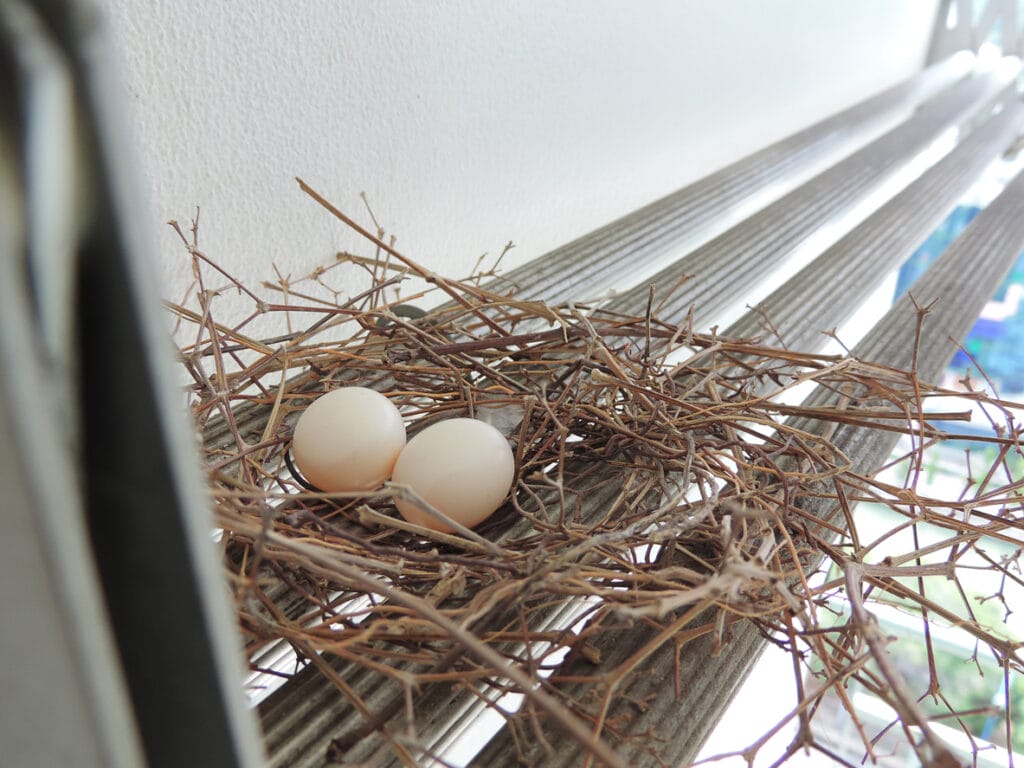
Moving a bird’s nest, especially one with eggs is not just about figuring out whether your conscience allows it, if you can do it without destroying it and if the bird will be okay with it. There are legal mandates to keep in mind too.
For instance, in North America, the Migratory Bird Treaty Act, 1918 is in place and protects over 800 birds. This means any bird that nests in your backyard is protected.
This law has a lot of clauses that keep you from moving their nests especially if they are “active” which means they are eggs in them or if the bird itself is in the nest.
Author Note: According to the Migratory Bird Treaty Act or the MBTA. According to this one, you are not allowed to take, import or export, transport, sell or barter any part of the nest including the eggs unless you have a permit.
So, destroying a bird’s nest is actually illegal especially if the eggs or baby birds that still depend on the adult bird are still in there. You also can’t really remove nests if you don’t have a permit from the US Fish and Wildlife Service
This means that if you find a nest on your property with a bird or eggs in there, it is an active nest and legally, you don’t have much of a choice.
But if you are determined to figure out how to move a bird’s nest with eggs from its place, you do have a few options like talking to a rescue organization that has a permit and can help you out.
But remember that moving the nest is also a stressful event for the birds and sometimes they tend to abandon nests that are touched by humans.
Why Do It: Things to Note
You might not like it but sometimes the situation demands that you make some tough calls. Having to move a bird’s nest, one with eggs, is one of those calls. But you need to know when it is an acceptable reason and when it’s just an entitled excuse.
This will also help you understand if a rescue organization is likely to be on your side of the argument or with law enforcement. Here are some acceptable reasons to move a bird’s nest.
- It is unused and has become unsafe to be used in the future by the bird.
- The nest is in your birdhouse and could use some cleaning before the birds return in the winter.
- The location of the nest is dangerous and might cause stress or injury to the birds using the nest.
- The birds have abandoned it at the end of the breeding season.
Typically, the birds move out after nesting season and that’s a good time to move. But if they originally built the nest in a bad location, you may need to move it to make sure the adult birds and the eggs are safe.
What is a poor location for a nest with eggs or young ones?
- In a drainage pipe or gutter
- On lawn mowers or grills
- Inside a chimney that is being used
- Inside dryer vents that are connected
- Dangerously wobbly on a car tire or bumper
- Near a busy walkway or door or any place with foot traffic really
- Near active spaces like construction zones, warehouses or playgrounds
If and when this happens, you must find gentle ways of discouraging the birds from building nests in these spots. This is also a good reason and time to figure out how to move a bird’s nest with eggs.
But you must do it without harming or scaring the birds which is why it is best to call a professional to handle the situation.
How Exactly Do You Do It?
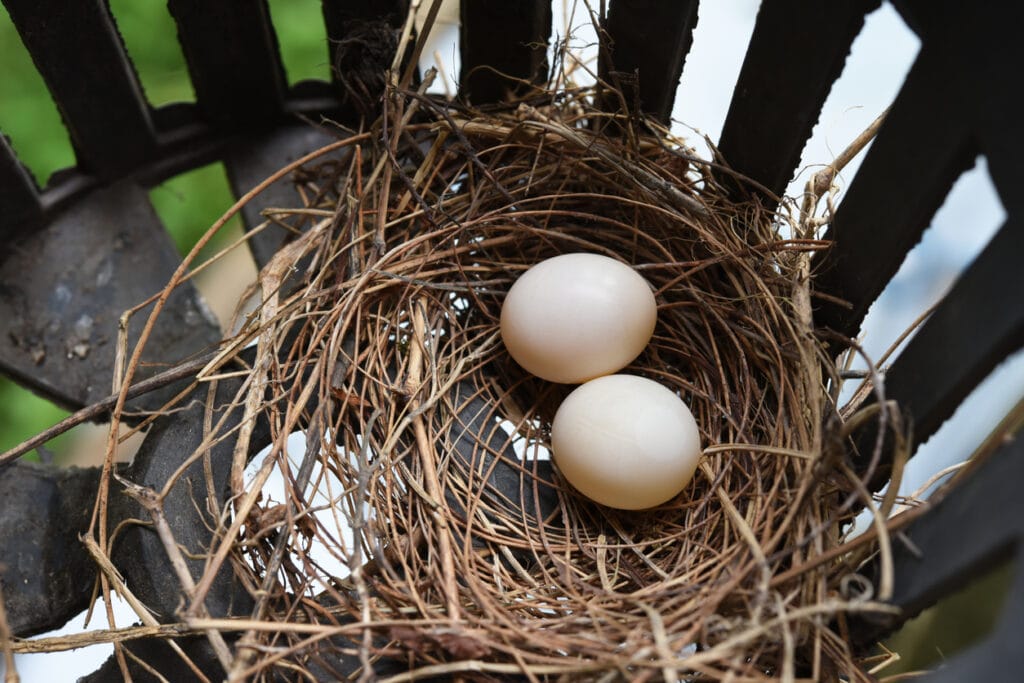
Author Note: One of the things professionals will offer to do is take care of the little ones till they are old enough to take care of themselves.
And if the story has not gotten so far just yet, they can also help you move the nest while making sure that the adult birds don’t feel threatened by the activity.
So, how to move a bird’s nest with eggs exactly? Well, the answer is in six simple steps. But do it with a professional to ensure the safety of the nest and to be on the right side of the law.
- Step 1: Find the nest and make sure you send a polite message to the adult birds that the place they have chosen is not ideal for you or for the babies. This is the case if they are on roofs or ledges or air vents where they are not exposed to rain.
- Step 2: Use precautions and be bird friendly. That means you must stay safe from pathogens that are present in bird poop. So, get yourself a pair of gloves (latex will work just fine) and a face mask is a good idea too. Add a pair of long sleeves to the list and you are good to go.
- Step 3: Now you must remove the nest. Get an anti-bacterial spray before you move the nest.
- Step 4: Lift the nest and move it to a place that is less than 100 meters from the original location. This will help the birds find the nest easily and save them from the trauma that comes from humans touching their nest.
- Step 5: Clean the original location of the nest with water or bleach solution so that it is once again sanitary for you to be there. Get rid of the gloves and wash your face mask and clothes in warm water. If you feel it is necessary, wash your hands with soap water.
If you call a professional, they will help you identify the bird and make sure the process is done safely for you and the bird. Identifying the species will also give you clarity on where you stand in terms of federal and state laws.
When You Should Not (Re)Move the Nest
Understanding the process of how to move a bird’s nest with eggs does not stop at that.
This is a good time to understand that you cannot move just about any nest without understanding how that specific bird operates.
Author Note: Sometimes, the authorities will also provide solutions that don’t need you to move the nest at all. So, it is good to know which nests must be left untouched. Here’s a cheat sheet if you don’t have the time to make the call.
- Nests of endangered birds are a no-go because they won’t build a new one if you disturb the existing one.
- Large birds like raptors reused the nest for years which means you should not mess with them even after the breeding season ends.
- All nests that are built in early summer are likely to be reused for another brood which means you can’t touch them.
- Any nest in a natural cavity which cannot be moved without destroying the cavity itself should not be touched.
- When it is unsafe for humans to reach the nest.
- Nests of aggressive birds like raptors and owls should be left alone.

The Bottom Line
If you love birds or wildlife in general, it is natural to want to give them their space without feeling discomfort because of the placement of the nest.
And a new nest with eggs is always a joy. So, finding out more about what to do when that inevitable human-wildlife conflict occurs is an excellent move.
Hopefully, this post has helped to understand when, where, and how to move a bird’s nest with eggs. Happy bird watching now.
Fly high friends!
FAQ
Ideally, no. Birds might not be able to sniff around and find out that a human has touched their nest but if they see you move it or even touch it, they are extremely likely to abandon it.
This could be because they suspect that it is some kind of a trap. They might have built their nest near us but they are still scared of humans.
Unsurprisingly, it is very distressing for them to find that their nest has been moved or destroyed.
This makes them abandon it. And if the baby birds are still in there, they will starve to death and well, that’s all on you.
That is also why gardeners are often upset when they find nests with eggs or abandoned babies.
Experts say, if you are going to move the nest, you might want to keep it near the original location.
This is because birds familiarize themselves with the surroundings of the nest because that’s where their babies are.
So, if you don’t move the nest too much, they will find it. But they are not detectives. So, if you take it far away, they might not find the nest which means they lose their home and their babies.




